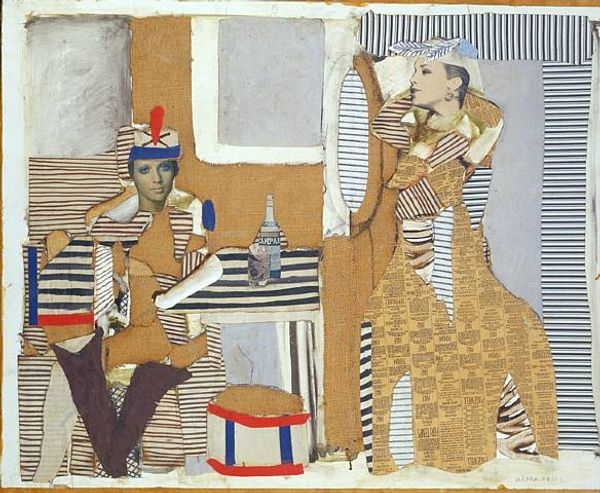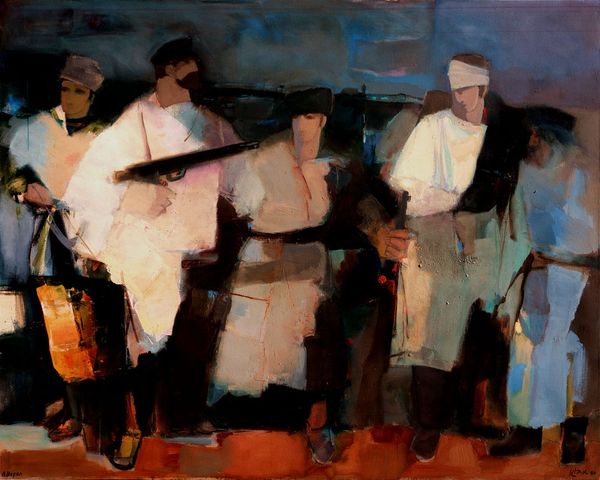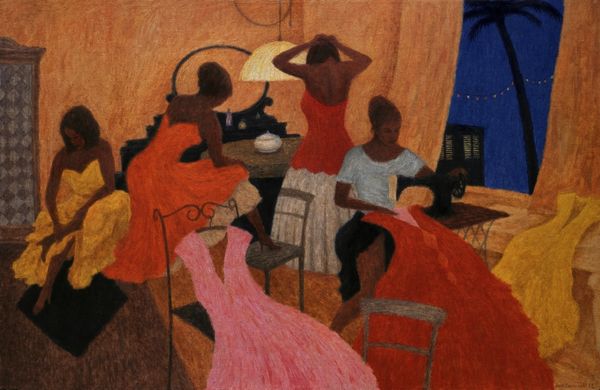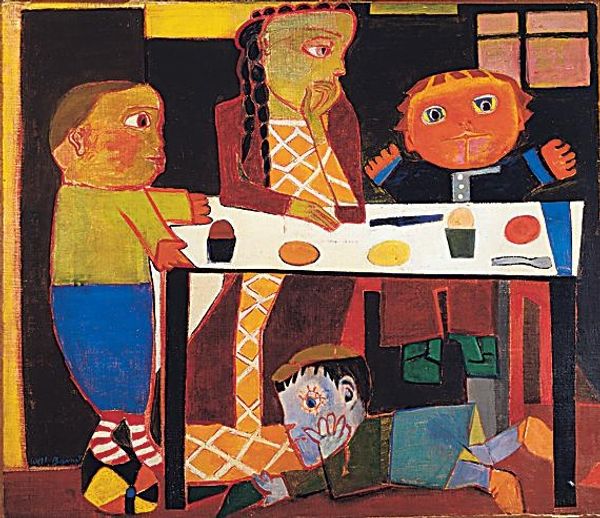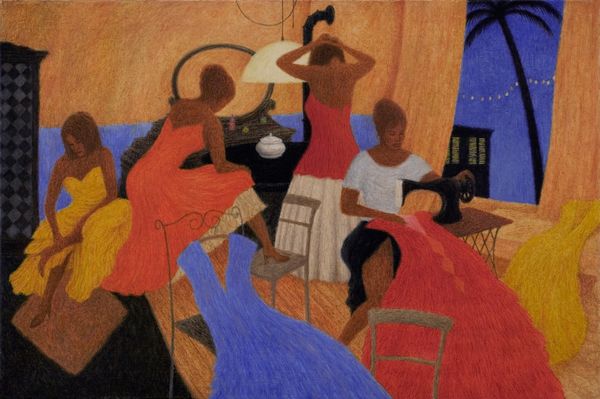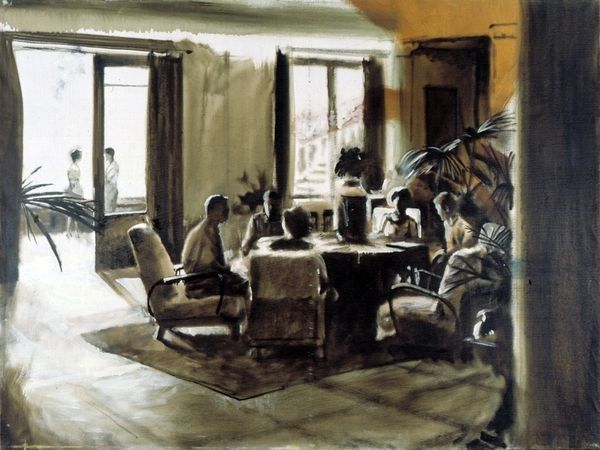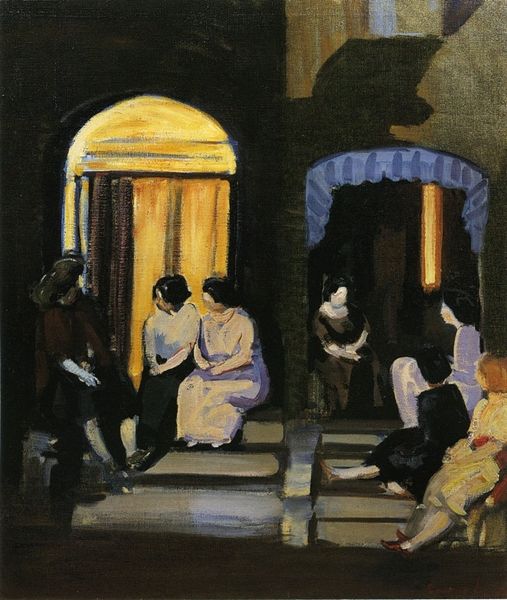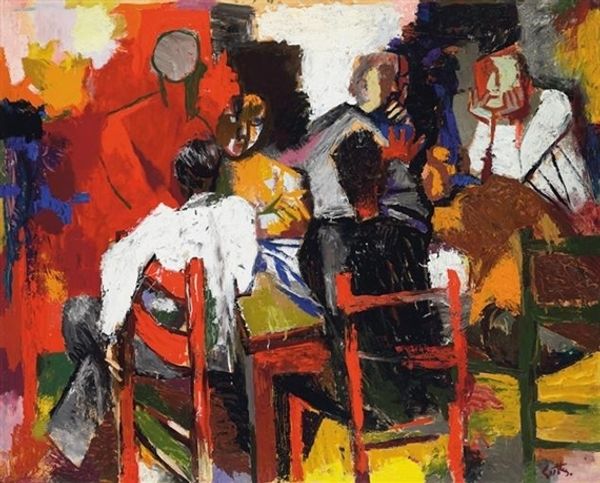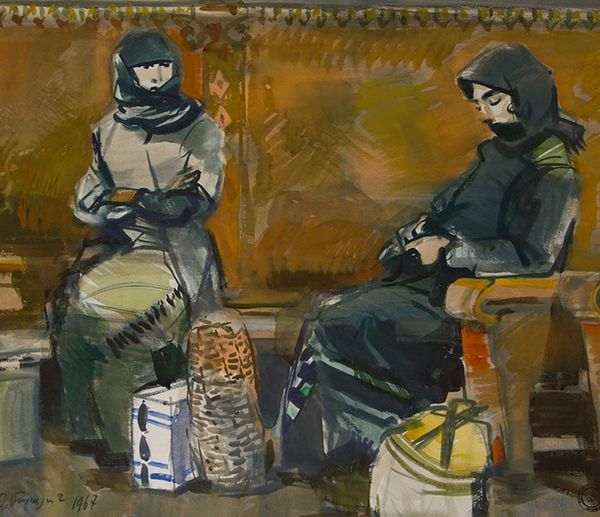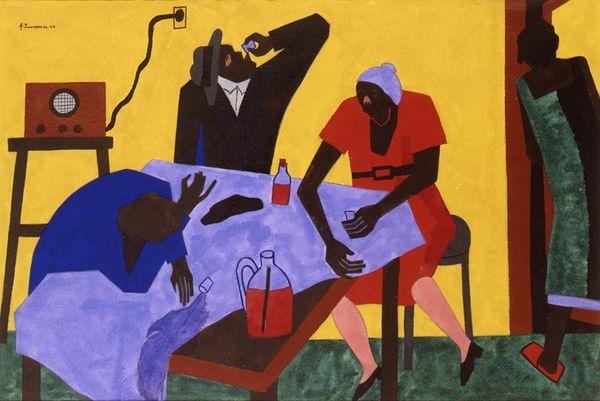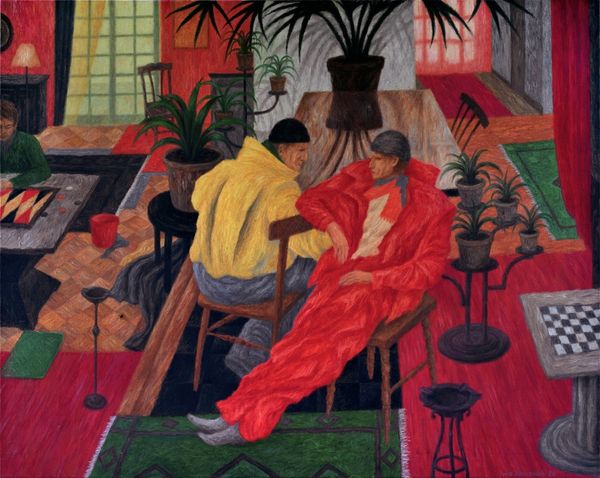
Copyright: Public domain
Editor: This is Horace Pippin's "Domino Players," painted in 1943 with oil paint. I find it captivating, mostly because the figures feel so familiar and domestic. What do you see in this piece that speaks to you? Curator: I’m drawn to the recurring motifs within this composition – the subtle yet powerful indicators of community, resilience, and shared experience. What visual cues lead you to interpret the scene as 'domestic?' Is it the warmth of the indoor setting? The game itself? Editor: Probably the game. Dominoes seem so...everyday, and I guess the simple interior adds to that. The window in the background even looks like it has a view outside. Is there more to that game symbolism? Curator: Games, particularly those played communally, are deeply symbolic. They can represent not only leisure and recreation, but also strategy, competition, and social dynamics. What cultural or personal memories does the image evoke for you? How might Pippin, as an African American artist during the 1940s, be using these symbols to comment on larger social narratives? Consider, also, that a window does frame the figures within an interior scene and acts as a liminal space: the inside and outside, known and unknown. Editor: Hmm, so maybe Pippin is suggesting how the simple game carries generations of history. Dominoes aren't just dominoes; they represent community in times of adversity. Am I on the right track? Curator: Precisely. Think about the objects around the players, each loaded with possible meaning. Even the color choices, what do those signify for you? Editor: I guess the overall muted palette evokes the past while the small dashes of bright colors hint at hope for the future. I'm seeing it in a totally different light now! Curator: That's the power of art, isn't it? How a single image can hold so much history and human experience.
Comments
No comments
Be the first to comment and join the conversation on the ultimate creative platform.
